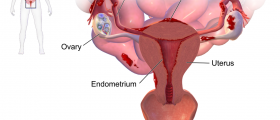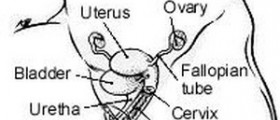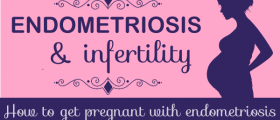
Women suffering from chronic pelvic pain are often diagnosed with endometriosis. This condition is provoked by attachment of the endometrial tissue in some other places than its normal location (the lining of uterus), such as the outside the uterus, ovaries, fallopian tubes, or even intestines or some other organs in the abdomen. In very rare cases, endometrial tissue may reach the lungs or the brain.
Endometriosis is not uncommon and estimation says that over 5.5 million of women in the United States are suffering from this problem. The number is probably even higher, because some endometriosis patients are not aware of the problem due to absence of any symptoms. This condition is often found during some pelvic surgeries performed for different gynecologic problems or laparoscopic procedure performed to evaluate infertility. Majority of these women are between 25 and 35 years of age and they have been suffering from serious abdominal pain for years.
Doctors have defined several factors contributing to development of endometriosis, such as origin, height and low body mass index (BMI). Tall thin Caucasian women are found to be more likely to develop endometriosis than women of African or Asian origin. Having someone in the family suffering from endometriosis also predisposes you to this problem.
How to Diagnose Endometriosis?
Definitive diagnosis of endometriosis is possible only by direct visualization of endometrial cysts, adhesions or implants during laparoscopic surgery.
Women may be suspected to have endometriosis if they happen to experience chronic pelvic pain and some other symptoms, but until the doctor rules out all other possibilities, such as different infections or tumors, the diagnosis is not definitive.
Laparoscopic surgery may also be used for biopsy of suspicious looking tissue, which is then further examined in the lab. A pathologist may also evaluate the tissue taken from conventional laparotomy surgery and determine whether this is misplaced endometrial tissue.Available Endometriosis Treatments
After the proper diagnosis, women suffering from endometriosis should consult their doctor and/or gynecologist about the treatment. Some women may be advised to increase physical activities and engage in healthy lifestyle in order to decrease pelvic pain, while others might need to use certain medications.
NSAIDs (non-steroidal anti-inflammatory drugs) like ibuprofen or naproxen sodium are often the first choice to relieve pelvic pain associated with endometriosis, but some patients may require stronger drugs (opioid painkillers).
GnRH (gonadotropin-releasing hormone) analogs could also relieve pain and decrease endometrial implants. These drugs are associated with many side effects but if combined with small doses of estrogen and progesterone, there are fewer problems.
Oral contraceptives are additionally used in treatment of endometriosis, as well as progestins (medroxyprogesterone acetate, norethindrone acetate or norgestrel acetate), androgens (danazol) and medications known as aromatase inhibitors (anastrozole and letrozole).

















Your thoughts on this
Loading...